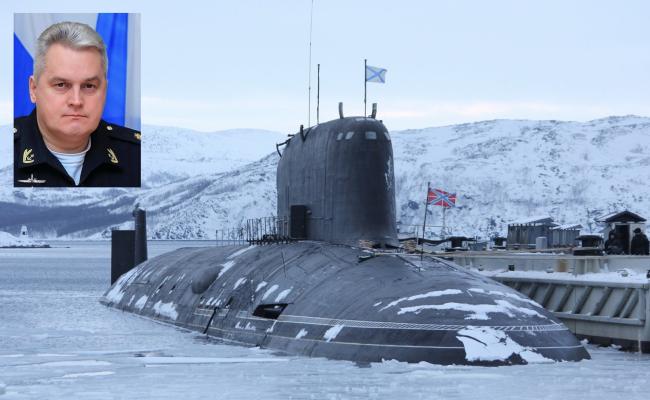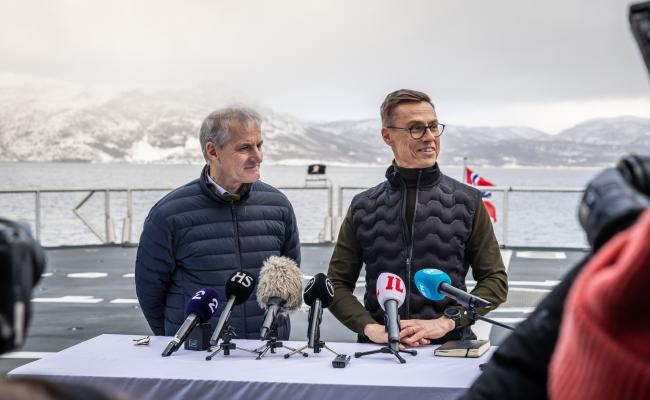Norway's Response to the Gravity: Four Main Measures to Strengthen the Armed Forces
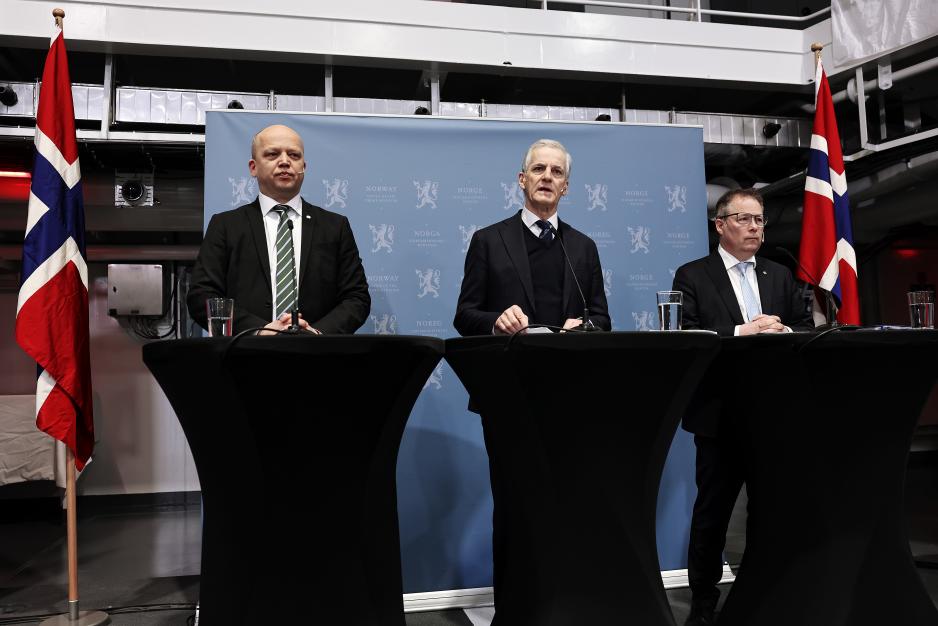
On Friday, Norway's PM Jonas Gahr Støre – flanked by MoF Trygve Slagsvold Vedum and MoD Bjørn Arild Gram – presented a proposal for new and major investment in the Armed Forces within the framework of long-term defense planning. ‘Providing security for the people of Norway is the Government’s most fundamental task. We need a defense that is fit for purpose in the emerging security environment," says Støre. (Photo: Torbjørn Kjosvold/the Norwegian Armed Forces)
The Norwegian government has proposed a new long-term plan on defense. At the top of the agenda is reinforcing the navy, land forces and air defense as well as situational awareness, particularly in the North. “A stronger national defense will contribute to deter those who might wish to threaten our sovereignty,’ says the PM.
"This is a historic boost for the Armed Forces," says Norway's PM Jonas Gahr Støre (Labor) about the government's proposal for a new long-term defense plan launched on Friday.
Such a plan is usually drawn up for four-year rolling periods. It establishes the Armed Forces' main tasks and provides guidelines for organization and development. When adopted in parliament, the Storting, the plan determines the long-term political, professional, and economic framework for the defense sector.
Støre presented the proposal on the new coast guard vessel KV Bjørnøya while docked in Oslo, together with MoD Bjørn Arild Gram (Center) and MoF Trygve Slagsvold Vedum (Center).
The government proposes strengthening Norway's defense for NOK 600 billion over the next 12 years, from this year to 2036.
"Norway threatens nobody, nor does NATO. But we must have the capability to defend ourselves if crisis and war occur. A stronger national defense will contribute to deter those who might wish to threaten our sovereignty," the PM underlines.
We need a defense that can be present to prevent, understand, and shape our environment.
Strengthening of all defense branches
"The long-term plan involves a significant strengthening of all branches of the Armed Forces," says Støre.
In its proposal, the government prioritizes investment in four main areas: strengthening the Navy, the land forces (the Army and the Home Guard), the air defense (in the Air Force and Army) – and the situational awareness capability (the space domain and maritime surveillance).
The most significant investments are proposed for new Navy vessels.
"The Government commits to strengthening the Navy. The Navy must be able to be present in our sea areas, prevent conflict, and ensure Norwegian influence and room for action. The Navy will receive the largest financial investment in this long-term plan," the prime minister points out and continues:
"We will also strengthen the land forces by expanding the Army from one to three brigades. The Army will have more tanks, air defense, and helicopters."
The government also plans to increase personnel in the Armed Forces by around 4,600 more conscripts, 13,700 more reservists and 4,600 more employees before 2036.
See the overview of proposed new acquisitions and measures below.

Due to Russia's warfare against the neighboring country Ukraine, the Norwegian government presents a new long-term defense plan with a gloomy backdrop. The Armed Forces are first and foremost to contribute to preventing and counteracting aggression and conflict in close cooperation with allies, says the PM. At the same time, he emphasizes that the defense forces must be equipped to handle possible crises and conflicts. (Photo: Torbjørn Kjosvold/the Armed Forces)
Main reasons
The government will upgrade the Armed Forces for several reasons, Støre states.
Among central keywords are Russia's behavior, the need for increased presence in the High North – and the changes in NATO, such as the alliance's new regional defense plans and the accession of Finland and Sweden.
"We assume that we must deal with a more dangerous and unpredictable neighbor for years to come. We cannot change our geography, but we can affect our room for action by doing more for our security," the PM points out.
He also highlights the significance of the High North:
"Our most important strategic area of interest is gaining greater geopolitical and military significance for us and many other countries. We need a defense that can be present to prevent, understand, and shape our environment."
Last month, the Norwegian government announced it would accelerate the country's realization of NATO's defense spending target of two percent of the GDP.
AT SEA

In the future, KNM Fridtjof Nansen, one of Norway's four frigates, will be joined by five new frigates if the government's investment proposal is adopted in parliament. Here, the mentioned vessel shows presence in the Barents Sea by the Goliat oil and gas field north of Hammerfest, Northern Norway. (Photo: Catharina Molland Dale/the Norwegian Armed Forces)
Proposed strengthening of the Navy
– Five frigates able to carry anti-submarine warfare helicopters.
– Up to ten large and eighteen smaller standardized surface vessels for the Navy and the Coast Guard.
– At least five new submarines. Four submarines have been purchased and are currently under construction in Germany, scheduled to be delivered in 2029. The government recommends acquiring an extra submarine, with an option on yet another.
– The government has recently suggested an upgrade of the Coastal Ranger Command, including five new high-speed vessels, in an investment proposition for parliament.
"The long-term plan's most costly singular investment is the purchase of at least five new frigates with anti-submarine helicopters," says MoD Gram and continues:
"Having control of what is happening in our ocean areas is perhaps Norway's most important task within NATO. It is crucial to the Armed Forces' assignment that the frigates can carry out anti-submarine operations."
Norway's current naval capabilities
– The Navy: 4 frigates, 6 submarines, 6 corvettes, 5 minesweeping vessels, the Coastal Ranger Command, the Norwegian Naval EOD Command, the Fleet Logistics Commando, and 3 logistics and support vessels.
– The Coast Guard: 14 vessels in total. A) Outer coast guard with 1 vessel of the Svalbard class, 2 newly arrived vessels of the Jan Mayen class (with another one on the way), 3 vessels of the Barents Sea class, 1 vessel of the Harstad class, as well as 2 anchor handling tug supply vessels; B) Inner coast guard with 5 vessels of the Nornen class.
SITUATIONAL AWARENESS

The government expresses great ambitions for Andøya Air Station, Northern Norway. This is also one of the suggested new "agreed areas" in Norway and the US' renegotiated supplementary agreement on defense cooperation of February 2024. Here, an American F/A-18 Hornet fighter is taking off from the mentioned air station during the Nordic Response exercise in March. (Photo: Ella Hagen/the Norwegian Armed Forces)
Proposed strengthening of situational awareness
– The acquisition of long-range drones with sensors and systems for continuous monitoring of maritime areas of interest in the North.
– The acquisition of satellites for surveillance and communication with an emphasis on Andøya in Nordland county, Northern Norway – as this island has an air station and a new spaceport.
– The government has recently announced plans for Andøya to be made into a base for precisely long-range drones, as well as being central in developing the Armed Forces' space operations and ability for allied reception.
– The acquisition of a simulator to increase the operative effect of the P-8 Poseidon maritime surveillance aircraft, with main base at Evenes Air Station.
– Further development of the Norwegian Joint Headquarters, located in a mountain complex east of Bodø in Northern Norway.
– Strengthening of the Armed Forces' information infrastructure.
Overall, the government maintains that the assessment of Norway's surrounding areas will be developed with more surveillance, presence, and control through the expansion of satellite and drone capacities, increased use of the new maritime patrol aircraft, and acquisition of marine vessels.
"Good situational awareness is important to protect national control and room for action. Andøya will be a central base in this development of the Armed Forces in the future," says MoD Gram.
"Norway will be the best in situational awareness in the North," the government declares in the long-term plan.
ON LAND
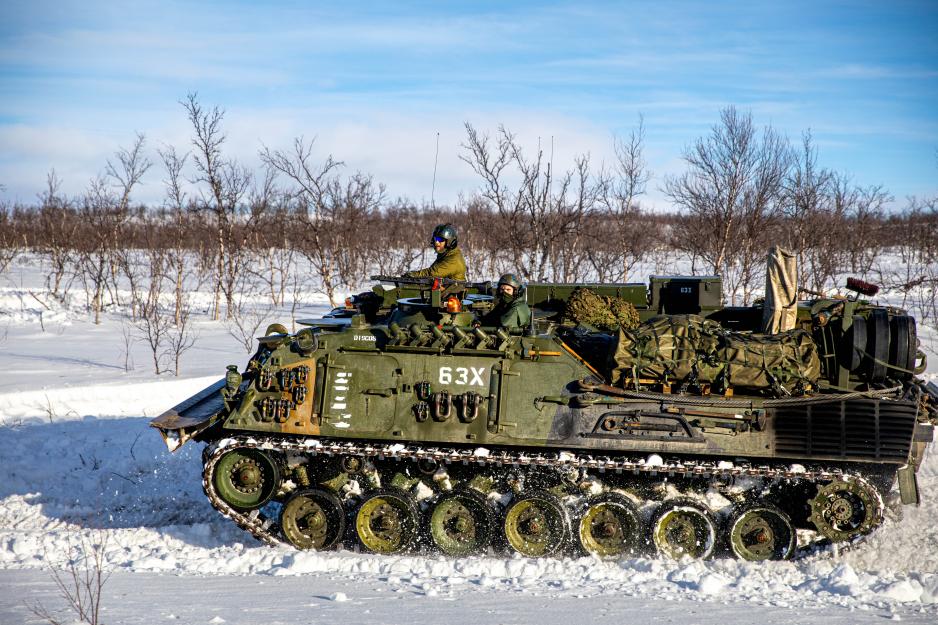
Forces in Brigade Nord during the major exercise Nordic Response 2024. This brigade is mainly located in Troms county, Northern Norway, and forms the core of the Norwegian army. In the long-term defense plan, the government proposes a further strengthening of the brigade – as well as the establishment of a additional northern brigade in Finnmark county, which borders Russia. (Photo: Karelius Heitmann/the Norwegian Armed Forces)
Proposed strengthening and restructuring of the land forces
– The Army will be developed from one to three brigades. In Northern Norway: a new one in Finnmark county and a strengthened Brigade Nord in Troms county. In addition, the government wants to establish a new reservist brigade in Southern Norway.
– The government wants to finalize the ongoing investment in Brigade Nord by acquiring new tanks, additional CV90 tanks, support units, and more funds for ammunition, exercise, and training. It is to be completed as a heavy infantry brigade with four mechanized battalions and support units by 2030. A mechanized Brigade Nord fulfills one of NATO's prioritized capability targets for Norway.
– A new Finnmark brigade at NATO's north-eastern flank: The government wants to further develop and expand the Finnmark land defense into a brigade. It is to be supplied with i.a. one light infantry battalion, artillery, air defense capacity, and necessary support. In addition, the government wants to establish a new reservist brigade in Southern Norway.
– The government seeks to reinforce the Home Guard with 4,500 new soldiers (for a total of 45,000), increase annual training and exercise, add new equipment, strengthen the Home Guard's ability to protect objects along the coast – and further develops its ability to take on extended national territorial responsibility.
"The demanding security policy situation we are facing shows that Norway needs a bigger army with greater stamina, better fighting power, and better ability to protect," Gram points out.
According to the government, the development of a Finnmark brigade will contribute to a considerable strengthening of the Armed Forces' fighting power, stamina, and ability to cooperate with allies in Norway's northernmost region.
AIR DEFENSE
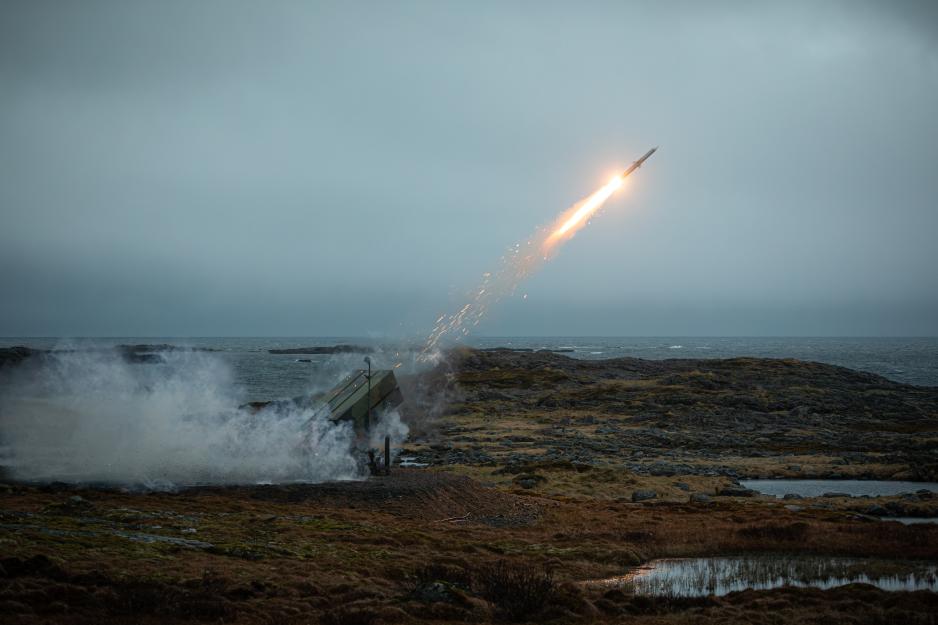
Here, the air defense battalion from Evenes Air Station, Northern Norway, practices with the air defense system NASAMS on Andøya during the exercise Formidable Shield 2023. Its full name is the Norwegian Advanced Surface-to-Air Missile System, as it was partly developed in Norway by Kongsberg Defense & Aerospace. (Photo: Martin Mellquist/the Norwegian Armed Forces)
Proposed strengthening of the air defense
– The acquisition of four new batteries for the air defense system NASAMS to the Air Force and the Army, and as previously decided: acquisition of new radars for this system. The Air Force, with air defense battalions at Evenes (Northern Norway) and in Ørlandet (Mid-Norway), currently has three such batteries. The army has one battery.
– Prioritizing the acquisition of long-range air defense systems to protect against short-range ballistic missiles.
"The Armed Forces must have the ability to protect Norway against attacks on military and civilian targets, and is to prioritize the ability to protect important military and civilian infrastructure against cruise missile attacks, short-range ballistic missiles, and unmanned systems," MoD Gram emphasizes.
Basis and process
The government has prepared the proposal for the long-term defense plan on the basis of the Norwegian Defense Commission's report and the professional military advice from Norway's Chief of Defense, General Eirik Kristoffersen, both presented in the spring of 2023.
Along the way, the government has had regular meetings with the parliament parties to develop a broad consensus around the main aspects of the long-term plan. The plan is now submitted to Parliament for its consideration and approval.




